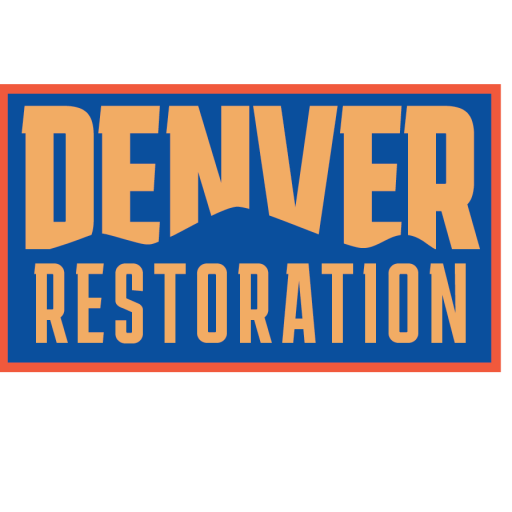The Vital Role of Damage Assessment and Estimation in Storm Recovery
The immediate aftermath of a storm is often a period of uncertainty and stress. Property owners are confronted with the task of understanding the extent of the damage, which is where Damage Assessment and Estimation comes into play. This critical step in storm recovery involves identifying the type and extent of damage, estimating the cost for repair. It forms the foundation for the following restoration efforts and helps create a clear roadmap to bring your property back to its pre-storm condition.
Effective Restoration Techniques and Equipment – Key to Storm Recovery
After the initial damage is assessed, the next step is implementing restoration techniques. These vary depending on the nature and extent of the damage, and they may include structural repairs, water extraction, mold removal, and more. Cutting-edge restoration equipment plays a significant role here, with advanced technologies helping to accelerate the storm recovery process and limit further damage. Techniques such as thermal imaging for leak detection and high-capacity dehumidifiers for moisture removal have revolutionized the industry, offering quicker and more effective methods for storm damage repair.
Dealing with Environmental and Health Safety Concerns Post-Storm
One major concern during storm recovery is the potential health and environmental risks. The mixture of water and contaminants can create hazardous conditions, leading to the growth of harmful bacteria and mold. Understanding these risks, and knowing how to navigate them safely, is essential. Professional restoration companies are well-versed in handling such situations and ensuring your property is safe and habitable again. Ensuring environmental and health safety is not just a compliance issue, but a crucial aspect of disaster planning and recovery.
Understanding Insurance and Legal Compliance in Storm Recovery
Storm recovery is not only about repairing physical damage, but it also involves navigating the intricate web of insurance claims and legal compliance. Ensuring fair processing of insurance claims can ease the financial burden and expedite the recovery process. Similarly, complying with local codes and regulations while carrying out repair work can save you from legal headaches in the future.
Keeping the Lines of Communication Open – A Customer-Centric Approach
The importance of clear communication in storm recovery is often overlooked. A customer-centric approach where information is shared transparently can bring about trust and avoid misunderstandings. It involves keeping the property owner informed about the progress of the recovery work, what to expect in terms of timeframes, and any changes that may affect the project’s course. The aim is to foster a sense of control and confidence amidst the distress caused by the storm.
Planning for the Unforeseen – The Importance of Crisis Management in Storm Recovery
Storm recovery is more than just a reactive process. Effective disaster planning and crisis management can help mitigate damage and reduce recovery time. This might involve tree trimming and removal, fixing vulnerabilities in the building structure, and having an evacuation plan among other precautionary measures. By being prepared, you can streamline your storm recovery process and curb potential damage.
Master the Restoration Process
In sum, the storm recovery process can be an overwhelming journey fraught with challenges. However, with the right information, tools, and a professional approach, you can navigate it with efficiency. Remember, the recovery involves more than just repairing the physical damage. It encompasses a range of aspects including safety considerations, legal matters, communication, and planning. The ultimate goal is not only to restore your property to its previous state but to ensure that it is safe, habitable, and risk-proof as much as possible. Keep up to date with the latest storm information and remember, a streamlined storm recovery is within your reach!
Take the first step in mastering the restoration process by understanding its components, and take back control of your property, one step at a time.
Exploring Different Scenarios – Water, Fire and Mold Damage
Property damage comes in different forms, some more visible than others. In the restoration industry, water, fire, and mold damage are some of the common types experienced by property owners. The approach to each scenario can vary greatly.
For fire damage, the initial focus is on stability and safety. Fire can cause structural compromise and the presence of chemicals can pose a serious health risk. The restoration process often involves smoke and soot removal, deodorizing, and repairing fire damage.
Water damage, on the other hand, can be an immediate threat or a slow and silent enemy. Rapid response is key in managing water damage whether it is a result of floods, leaks or humidity. The process involves water extraction, evaporation, and dehumidification, apart from repairing the cause of the water intrusion to prevent repeated incidents.
While mold growth can be a consequence of unattended water damage, it can also arise independently in moist environments. Regular and effective mold testing can help you stay ahead of this trouble. The goal is to detect and eliminate mold by understanding its uniqueness, type, and conducive growth conditions.
Embracing Modern Restoration Techniques
One of the main advantages of using professional restoration services is access to the latest technology and equipment for efficient remediation. Infrared cameras allow us to identify hidden spots of water or heat that the naked eye might miss. Specialized air movers can speed up evaporation, pulling moisture from materials and converting it into a gaseous state. High-capacity dehumidifiers can quickly reduce moisture levels, which is important for combating mold growth.
Modern restoration techniques should be seen as empowerment tools that can support a faster return to normalcy with less inconvenience. They reduce the guesswork and physicality of traditional methods, enabling a more precise and efficient approach to property restoration.
Property Restoration – A Proactive Approach
The focus on restoration should not merely be on repairs. Adopting a proactive and preventative stance can save property owners from many headaches, financial losses, and safety risks. This includes regular checks for potential vulnerabilities in the structure, possible hazardous conditions that might predispose to certain kinds of damage (such as locating sources of excessive moisture that may lead to mold growth), and ensuring the property is compliant with all local codes.
A proactive approach also implies the need for a thoughtful disaster plan. While it is impossible to predict all potential disasters, certain risks can be anticipated based on geographical location and known structural vulnerabilities. Understanding your property’s susceptibility to common damaged scenarios can help create an effective action plan tailored to your unique situation.
Invest in Regular Property Inspections
It is prudent to invest in regular property inspections to minimize unexpected surprises. Timely detection and intervention can avert more substantial future destruction. These inspections act as preventive steps to check your infrastructure’s health and can guide you in preparing for any imminent unknowns. Service providers often provide a comprehensive condition report of your property, offering valuable insights on maintenance or repair requirements.
The Restoration Industry – Ever Changing and Advancing
Continuous innovation drives the restoration industry. With rapidly emerging technologies and ever-changing regulations, it’s crucial to stay informed. Staying connected with a professional restoration service provider can ensure your approach to property restoration remains updated. It will enable you to leverage their expertise on regulatory governance, changes in industry standards, and access to advanced technology and equipment.
In summary, property restoration after a storm, or any other form of damage, should not be perceived as a daunting task. With the right support, adequate knowledge and proactive steps, property owners can successfully navigate this process and restore their asset’s integrity and safety. You are not alone during these challenging times. Restoration professionals are there to assist you in recovering your property and restoring your peace of mind. With the right preparation and assistance, restoration is a completely achievable goal. Indeed, a well-rounded, informed approach to property restoration is within your grasp.
Take that first step towards mastering the restoration process by seeking knowledge, skillfully handling your insurance claims, maintaining open and clear communication, and proactively managing potential crises. Remember, rebuilding is a process and your determination to restore your property is the force that drives the path to recovery. Keep up-to-date with the latest storm information here. Work in tandem with experts and take back control, one step at a time. This guide can further help you to plan and navigate through the storm recovery process.
denver-restoration.com/handling-fire-damage-like-a-pro-tips-from-experienced-restorers

